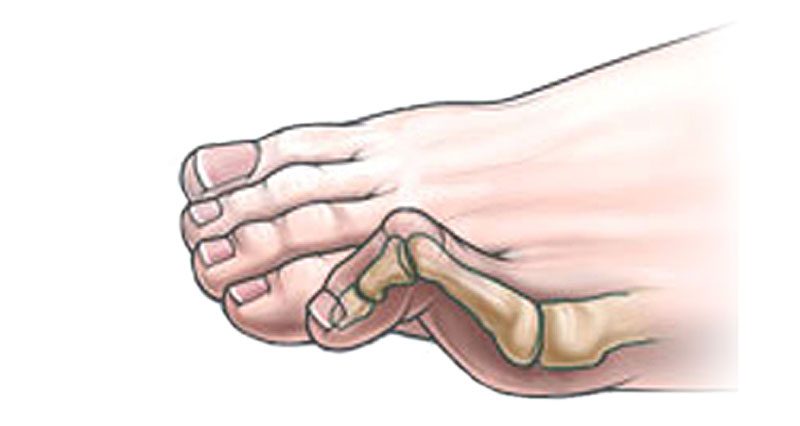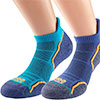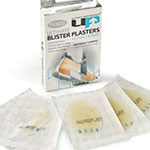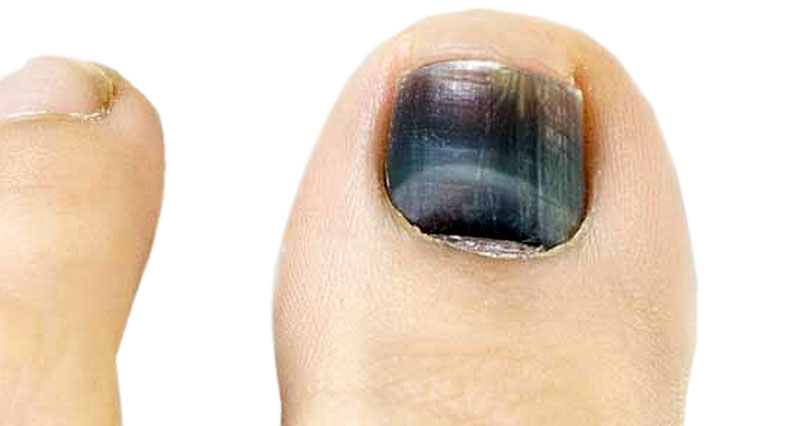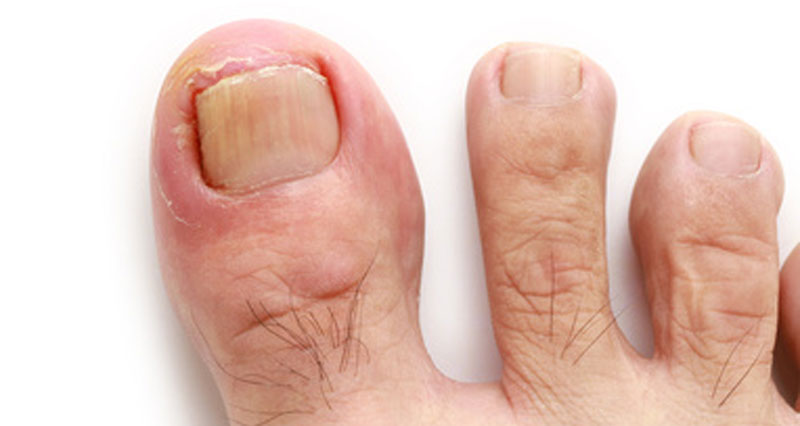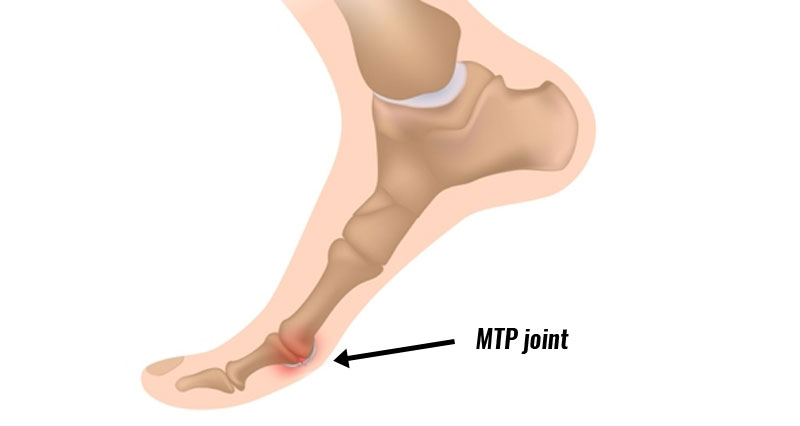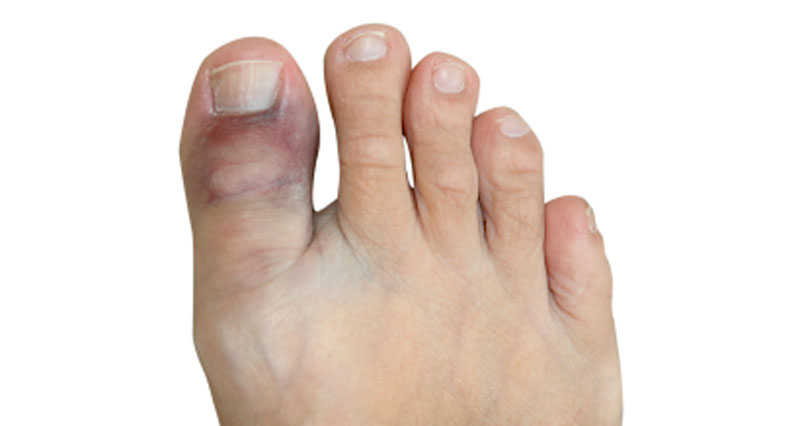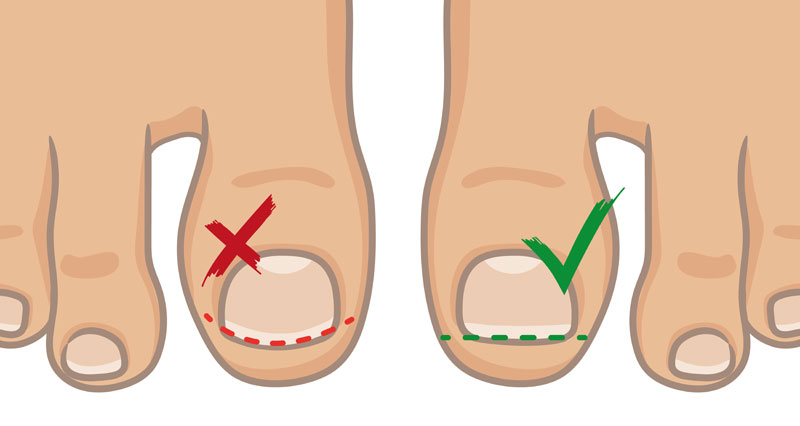Hammer toe is a condition which causes one or more of the smaller toes to become bent upwards. Often caused by wearing shoes that are too small, early treatment is important to prevent permanant deformity.
Signs and symptoms
Signs and symptoms of Hammer toe include:
- A bent or deformed toe
- Toe pain
- Swollen toe
People with a hammer toe often find corns or calli (callus) develop on the top of the toe. This is because it rubs against your shoe. This is painful if anything rubs on it or you put pressure on your toe.
Anatomy
Each of the 4 smaller toes consists of 3 bones called phalanges. As a result, each toe has two joints called interphalangeal joints. With Hammer toe, the toe bends at the proximal or first interphalangeal joint.
Initially, you can straighten it, but if left untreated, this becomes a permanent deformity.
What causes Hammer toe?
The following cause or increase your chance of developing Hammer toe:
Poor-fitting footwear
If your shoes are too small, either too narrow, or too short then your toes compress into a shortened position. As a result, muscles eventually shorten, which pulls your toes into a permanantly bent position.
Muscle imbalance
Alternatively, over-activity in the extensor digitorum longus muscle with weakness in the counteracting flexor digitorum longus muscle under the foot may cause it.
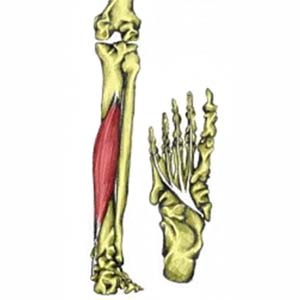
The Flexor digitorum longus muscle makes the toes grip and mould to the floor’s surface, which is vital in maintaining balance on rough surfaces. The tendons pass under the foot.
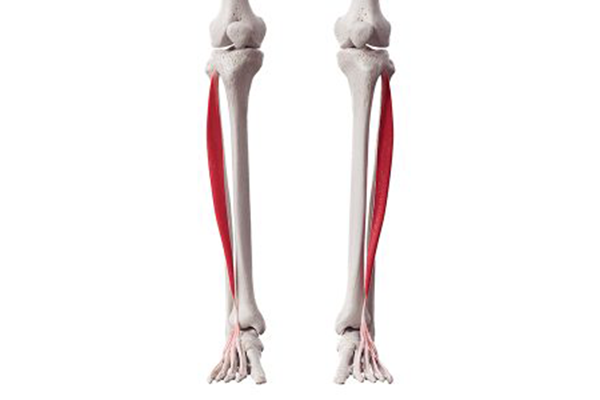
Walking barefoot on an uneven surface is an excellent exercise for this muscle. You stretch it by pulling the foot and toes upwards.
The Extensor digitorum longus muscle (often shortened to EDL) is in the front of the lower leg, in the outer more muscle-bound compartment. When this muscle contracts it pulls your toes upwards. Toe raises are a good strengthening exercise for this muscle. You stretch it by pulling the toes and foot downwards as in a shin stretch.
Congenital factors
Sometimes it is a congenital condition, meaning it is present from birth. It is also more common in those with arthritis in the foot or diabetes.
Treatment for Hammer toe
In the earlier stages of hammer toe, when you can still manually straighten them, conservative treatment is appropriate.
This means wearing shoes which are a half size bigger than normal and which are not narrow around the toes.
Exercises to stretch your toes and strengthen the muscles under the foot are important. This balances the tightness of the tendons on top of your foot.
Use padding or corn plasters to ease the discomfort of any associated corns and calluses.
Do I need surgery for Hammer toe?
If conservative treatment for Hammer toe fails, or if you do not treat it early enough, and your toes are permanently misaligned, then you may need surgery. Surgery involves either cutting the tendon or fusing the joint.
It is best to treat congenital cases in early childhood with manipulation and splinting.
